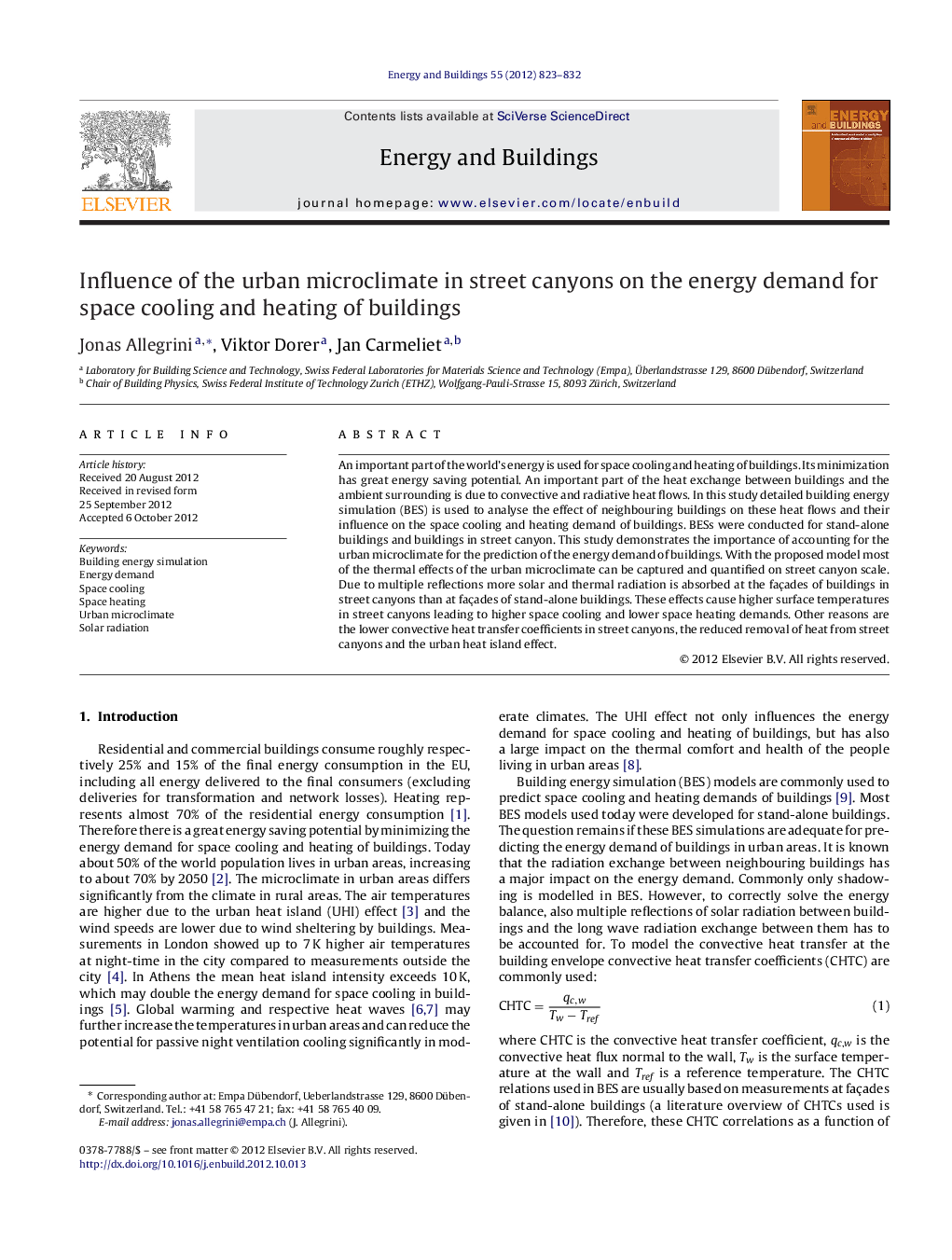| کد مقاله | کد نشریه | سال انتشار | مقاله انگلیسی | نسخه تمام متن |
|---|---|---|---|---|
| 263892 | 504085 | 2012 | 10 صفحه PDF | دانلود رایگان |

An important part of the world's energy is used for space cooling and heating of buildings. Its minimization has great energy saving potential. An important part of the heat exchange between buildings and the ambient surrounding is due to convective and radiative heat flows. In this study detailed building energy simulation (BES) is used to analyse the effect of neighbouring buildings on these heat flows and their influence on the space cooling and heating demand of buildings. BESs were conducted for stand-alone buildings and buildings in street canyon. This study demonstrates the importance of accounting for the urban microclimate for the prediction of the energy demand of buildings. With the proposed model most of the thermal effects of the urban microclimate can be captured and quantified on street canyon scale. Due to multiple reflections more solar and thermal radiation is absorbed at the façades of buildings in street canyons than at façades of stand-alone buildings. These effects cause higher surface temperatures in street canyons leading to higher space cooling and lower space heating demands. Other reasons are the lower convective heat transfer coefficients in street canyons, the reduced removal of heat from street canyons and the urban heat island effect.
► Energy simulations were performed for stand-alone and street canyon buildings.
► Higher space cooling demands in street canyons than for stand-alone buildings.
► Solar and thermal radiation exchange affects the cooling demand most.
► Convective heat fluxes and urban heat island effect contribute to higher demands.
► Urban heat island effects reduce also cooling potential by night-time ventilation.
Journal: Energy and Buildings - Volume 55, December 2012, Pages 823–832